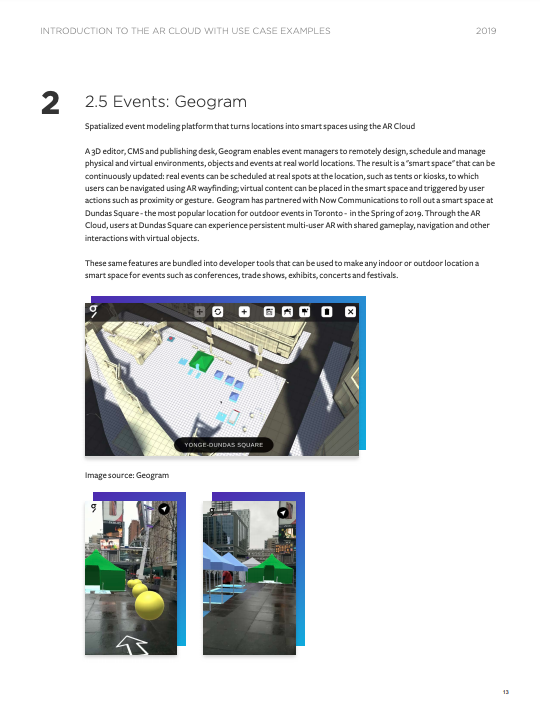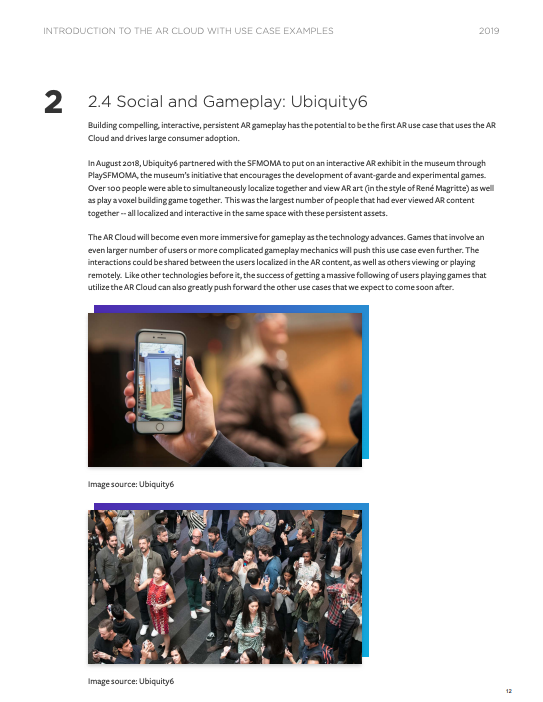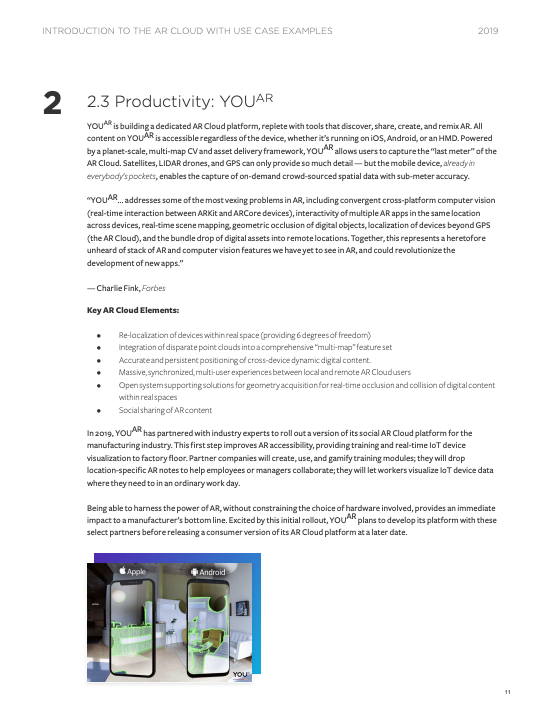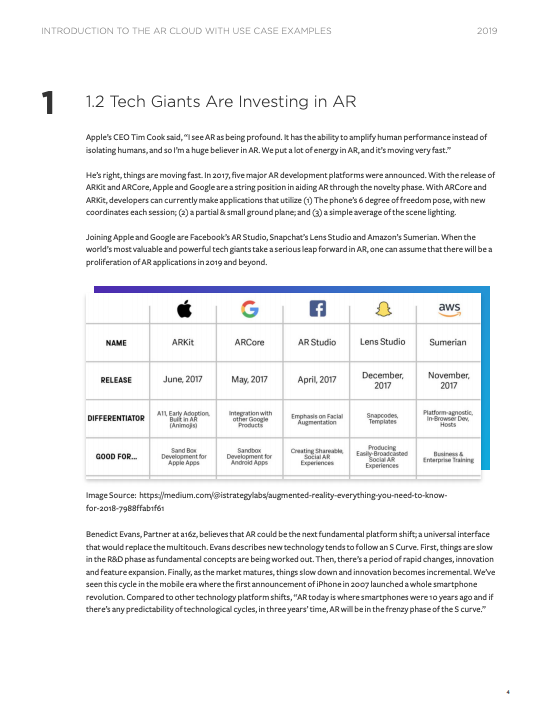Members: download it from our Members GDrive or email info@thevrara.com
Introduction
The world is moving towards a fundamental shift where our physical reality will soon blend with a virtual one. This idea opens up an entirely new frontier in which our experiences and our realities will be extended in ways we could have never imagined. In this near future, the possibilities for AR are endless.
Brands can attract and engage customers with more immersive and interactive experiences not bounded by physical constraints. Employees can learn how to operate equipments more effectively in complex assembly lines, reducing cost and risks for businesses. Students can visualize complicated diagrams in 3D, improving academic performance. Consumer products, instruction manuals and textbooks are just a small fraction of static objects that can be brought to life.
For mass adoption of AR to occur, content must persist in the real world across space, time and devices. The 3D virtual art will “live” in that space as if it’s really there and will not disappear between different app sessions. Multi-user, occlusion are two additional functions that are key to augmented reality adoption. To enable these abilities and a streamlined experience, the “AR Cloud” is needed.
Authors:
Alex Chuang, Shape Immersive
Amy LaMeyer, EnteringVR
Colin Steinmann, Bent Image Lab / youAR
Gabriel Rene, VERSES
Mikko Karvonen, Immersal
Sam Beder, Ubiquity6
Steven Swanson, VERSES
Contributors:
Matt Miesnieks, 6d.ai
Kris Kolo, VRARA
Table of Contents
1.1 Definition(s) of AR Cloud
1.2 Tech Giants Are Investing in AR
1.3 Building the AR Cloud
2. Use Cases
2.1 Gaming: Niantic
2.2 Indoor Navigation: Immersal
2.3 Productivity: YOUAR
2.4 Social and Gameplay: Ubiquity6
2.5 Events: Geogram
2.6 Location and Tracking: Fantasmo
2.7 AR real estate: SuperWorld
3. Conclusion






